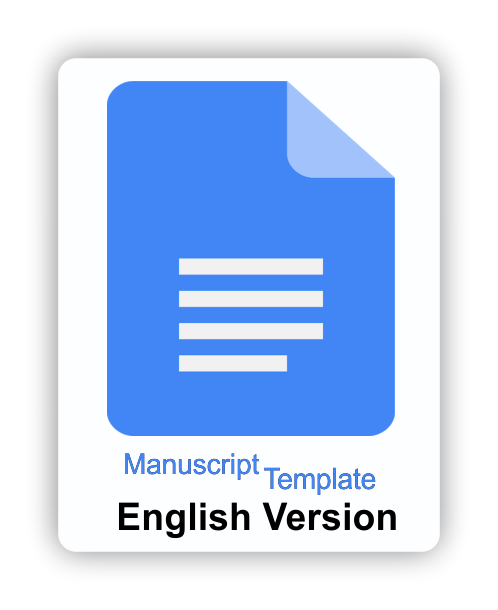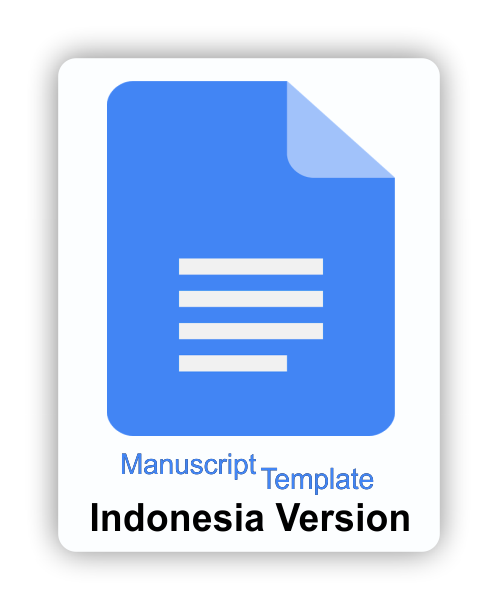Audience engagement in practice tests and instructional videos on YouTube
Downloads
Adnan, M., Habib, A., Ashraf, J., Mussadiq, S., Raza, A. A., Abid, M., Bashir, M., & Khan, S. U. (2021). Predicting at-risk students at different percentages of course length for early intervention using machine learning models. IEEE Access, 9, 7519–7539. https://doi.org/10.1109/ACCESS.2021.3049446
Aldous, K. K., An, J., & Jansen, B. J. (2019). View, like, comment, post: Analyzing user engagement by topic at 4 levels across 5 social media platforms for 53 news organizations. Proceedings of the Thirteenth International AAAI Conference on Web and Social Media 13(01), 47–57. https://doi.org/10.1609/icwsm.v13i01.3208
Beheshti, M., Taspolat, A., Kaya, O. S., & Sapanca, H. S. (2018). Characteristics of instructional videos. World Journal on Educational Technology: Current Issues, 10(2), 79–87. https://doi.org/10.18844/wjet.v10i2.3418
Chalkias, I., Tzafilkou, K., Karapiperis, D., & Tjortjis, C. (2023). Learning analytics on YouTube educational videos: Exploring sentiment analysis methods and topic clustering. Electronics, 12(39), 1–13. https://doi.org/10.3390/electronics12183949
Cihangir, H. H., & í‡oklar, A. N. (2021). Using YouTube as an education environment: Examining follower view. International Technology and Education Journal, 5(1), 50–60. https://eric.ed.gov/?id=EJ1312890
Cohen, L., Manion, L., & Keith Morrison. (2018). Research methods in education (8th ed.). Routledge.
Dubovi, I., & Tabak, I. (2021). Interactions between emotional and cognitive engagement with science on YouTube. Public Understanding of Science, 30(6), 759–776. https://doi.org/10.1177/0963662521990848
Dussel, I., & Ferrante, P. (2023). Global connective media: YouTube as an educational infrastructure. In International Encyclopedia of Education: Fourth Edition (pp. 622–629). Elsevier. https://doi.org/10.1016/B978-0-12-818630-5.01021-6
Eamcharoen, P. (2024). Enhancing entrepreneurship education with innovatively designed YouTube videos: Evaluating student learning and effectiveness of Youtube videos as educational tools. Higher Education Studies, 14(4), 173–185. https://doi.org/10.5539/hes.v14n4p173
Elango, M., & Kumaravel, K. (2022). Content analysis of OER: A literature review. Shanlax International Journal of Education, 10(3), 61–70. https://doi.org/10.34293/education.v10i3.4872
Firmansyah, N. W., Hermanto, Y. A. L., Susilo, G., Nada, S. B., & Ardianta, D. (2024). The effectiveness of explainer video duration as a delivery of practical course teaching material in SIPEJAR. KnE Social Sciences, 34–38 https://doi.org/10.18502/kss.v9i15.16185
Foster, D. (2020). Factors influencing the popularity of YouTube videos and users' decisions to watch them [Doctoral dissertation, University of Wolverhampton]. https://wlv.openrepository.com/handle/2436/623742?show=full
Fraenkel, J. R., & Wallen, N. E. (2019). How to design and evaluate research in education (10th ed.). McGraw Hill.
Goel, N., & Rastogi, M. (2024). Recent trends in virtual teaching. In Virtual lifelong learning: Educating society with modern communication technologies (pp. 85–102). Bentham Science Publishers Pte. https://doi.org/10.2174/9789815196566124010010
Guilherme, O., Da Silva, V., Vinicius, M., Guelpeli, C., Luiz, W., & Assis, S. (2024). YouTube as an educational tool: Insight from a scientific analysis. Brazilian Journal of Education, Technology and Society (BRAJETS), 17(4), 1444–1459. https://doi.org/10.14571/brajets.v17.n4.2024
Guo, P. J., Kim, J., & Rubin, R. (2014). How video production affects student engagement: An empirical study of MOOC videos. L@S 2014 - Proceedings of the 1st ACM Conference on Learning at Scale, 41–50. https://doi.org/10.1145/2556325.2566239
Hussain, K., Khan, M. L., & Malik, A. (2024). Exploring audience engagement with ChatGPT-related content on YouTube: Implications for content creators and AI tool developers. Digital Business, 4(1), 1-14. https://doi.org/10.1016/j.digbus.2023.100071
Ilin, V. (2022). The role of user preferences in engagement with online learning. E-Learning and Digital Media, 19(2), 189–208. https://doi.org/10.1177/20427530211035514
Jayavardhini, P., Mahalakame, R. M., Srinivetha, P., & Eugene Berna, I. (2023). Analyzing educational content on YouTube: Trends, user behavior, and recommendation strategies. International Journal of Scientific Research in Engineering and Management, 07(09), 1–7. https://doi.org/10.55041/ijsrem25598
Lijo, R., Castro, J. J., & Quevedo, E. (2024). Comparing educational and dissemination videos in a STEM YouTube channel: A six-year data analysis. Heliyon, 10(3), 1-15. https://doi.org/10.1016/j.heliyon.2024.e24856
Mertler, C. A. (2019). Introduction to educational research (2nd ed.). SAGE Publications, Inc.
Quintero-Rodríguez, I., & Colás-Bravo, P. (2024). Youtube and informal learning: An analysis of the relationship between the platform and the educational experience. Comunicar, 32(79), 23–34. https://doi.org/10.58262/V33279.3
Roy, S. K. (2023). YouTube's influential factors for academic achievement: A two-stage approach. Telematics and Informatics Reports, 10, 1-11. https://doi.org/10.1016/j.teler.2023.100060
Saurabh, S., & Gautam, S. (2019). Modelling and statistical analysis of YouTube's educational videos: A channel owner's perspective. Computers and Education, 128, 145–158. https://doi.org/10.1016/j.compedu.2018.09.003
Seo, K., Dodson, S., Harandi, N. M., Roberson, N., Fels, S., & Roll, I. (2021). Active learning with online video: The impact of learning context on engagement. Computers and Education, 165, 1-16. https://doi.org/10.1016/j.compedu.2021.104132
Shen, Z., Tan, S., & Pritchard, M. J. (2022). Understanding the effects of visual cueing on social media engagement with youTube educational videos. IEEE Transactions on Professional Communication, 65(2), 337–350. https://doi.org/10.1109/TPC.2022.3156225
Shoufan, A., & Mohamed, F. (2022). YouTube and education: A scoping review. IEEE Access, 10, 125576–125599. https://doi.org/10.1109/ACCESS.2022.3225419
Sugiyono. (2013). Metode penelitian kuantitatif kualitatif dan R&D. Alfabeta.
Sui, W., Rush, J., & Rhodes, R. E. (2022). Engagement with web-based fitness videos on YouTube and Instagram during the COVID-19 pandemic: Longitudinal study. JMIR Formative Research, 6(3), 1-11. https://doi.org/10.2196/25055
Sweatt, L. (2023, October 11). Beginner's guide to YouTube Studio. VidIQ. https://vidiq.com/blog/post/beginners-guide-youtube-studio/
UNESCO. (2024). What you need to know about digital learning and transformation of education. https://www.unesco.org/en/digital-education/need-know
Walsh, J. N., O'Brien, M. P., & Costin, Y. (2021). Investigating student engagement with intentional content: An exploratory study of instructional videos. The International Journal of Management Education, 19, 1–9. https://doi.org/10.1016/j.ijme.2021.100505
Walsh, O'Brien & Slattery (2019). Video viewing patterns using different teaching treatments: A case study using YouTube analytics. Research in Education and Learning Innovation Archives, 22, 77–95. https://doi.org/10.7203/realia.22.15389
Yang, S., Park, S., Jang, Y., Lee, M., & Research, L. A. (2024). YTCommentQA: Video question answerability in instructional videos. Proceedings of the Thirty-Eighth AAAI Conference on Artificial Intelligence (AAAI-24), 38(17), 19359–19367. https://doi.org/10.1609/aaai.v38i17.29906
The journal allows the author(s) to hold the copyright without restrictions. Finally, the journal allows the author(s) to retain publishing rights without restrictions
 | Jurnal Inovasi Teknologi Pendidikan by http://journal.uny.ac.id/index.php/jitp is licensed under a Creative Commons Attribution-ShareAlike 4.0 International License. |























